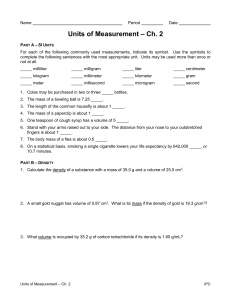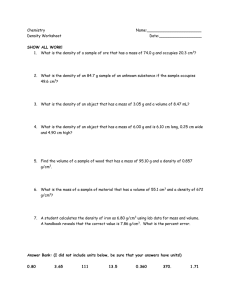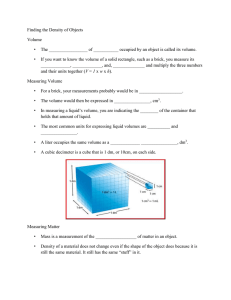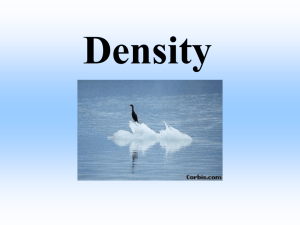Happy and Sad Egg Prelab
advertisement
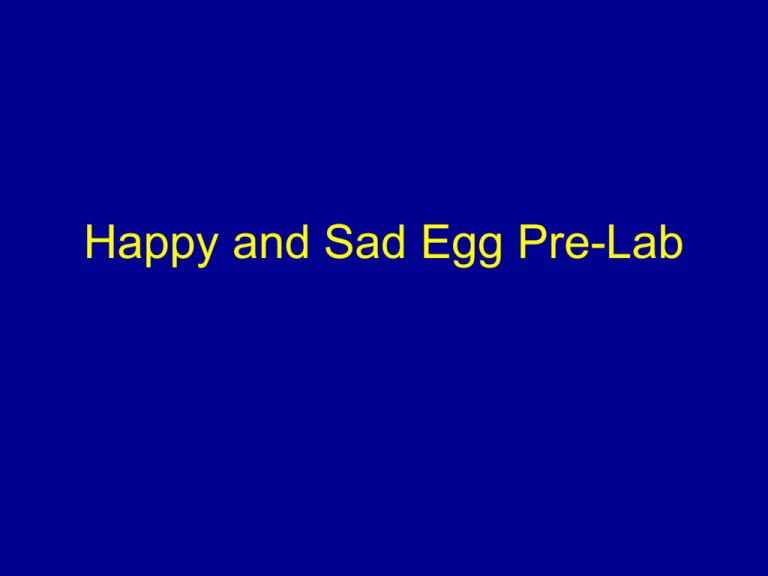
Happy and Sad Egg Pre-Lab Learning Targets • I will be able to define density, mass and volume and be able to apply them using the equation d=m/v. • I will be able to describe why models are necessary for science. Scientific Language Cards • Volume: amount of SPACE or room an object occupies • Models: help visualize concepts that are too large, small, or complex to directly observe. • Density: MASS per unit volume Video Clip on Density/Volume • https://www.youtube.com/watch?v=GMNp PgLT8Fk Definitions • Models—help visualize concepts that are too large, small, or complex to directly observe. – Example: Model of the solar system – Example: Model of an atom Definitions Volume: amount of SPACE or room an object occupies (not capacity – capacity is how much an object holds) If the object has a “regular” geometric shape such as a rectangle, you can multiply length x width x height (cm3) to get the volume V = lwh If it is “odd” shaped such as a sinker used for fishing, how would you find the volume? Put it in water and see how much the volume of the water increases! Definitions Density: MASS per unit volume Simple definition: It is the mass of ONLY one cubic centimeter of a substance. Remember: 1 cm3 = 1 mL Everyday words: how tightly PACKED the matter is making up an object Thinking Question • I have a 2 liter bottle of sand and I find its mass to be 2600 g. How can I figure out the mass of only 1 mL or cm3 of sand???? • Answer: Divide the total mass (grams) by the total volume (milliliters) to get the mass of 1 mL. Density mass Density volume m D V kg or g mL, L, cm 3 , or m 3 (D = m/V a.k.a. – Department of Motor Vehicles!) FYI: Pure water has a density of 1 g/mL. That means one milliliter or cm3 of water has a mass of 1.0 gram Newspaper- Physical Properties page 16 • Develop a newspaper page with 3 different articles explaining 3 different examples of physical changes occurring today. • Illustrate a comic strip showing a physical change

